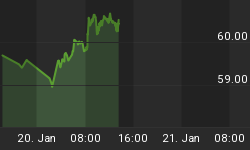Mirror, mirror on the wall, what is the most troubled cross of them all? Well, it's actually the Russian ruble. But in recent weeks, there has been another victim to join the most battered currency club - the Mexican peso.
Since the implosion of Lehman Brothers (September), risk appetite has packed up and left town - for all asset classes, including currencies - and Mexico's peso is no exception. This is reflected in the chart below with the MXN trading below 11/$ for most of 2008, up until - you guessed it - September. At that point, investors became so risk averse that you couldn't get them to bet on the World Series. The peso at around 13/$ felt a bit more comfortable for the time being because the data flow from south of the border was actually pretty resilient.
But like the rest of the world, things became evident over time. Data release after data release spelled disaster for the US-dependent economy, and the peso came under severe downward pressure with each fresh batch of bad news. After trading under 14/$ for the remainder of 2008, the new year ushered in a whole new panic attack for investors. Immediately, the MXN began trading over 14/$, then over 14.25/$, then up to 14.5/$. Once 14.5/$ was breached (end of Jan., horizontal reference on chart), the government and central bank began to worry. Not only does a weaker currency have inflationary consequences, but this was starting to look a little like a speculative attack.
Chart 1
And what do you do during a speculative attack on your currency? You sell FX reserves. In the week ended Feb. 6, Mexico sold $1.06 billion from its foreign reserves to help the battered peso. While the markets responded favorably for a short time after each sale, over the course of the day the currency would eventually trade lower than before the government's dollar auction. The authorities seemed to forget that the market has an extremely short-term memory. Perhaps they also forgot to take heed of Russia's current nightmare situation. By selling reserves to protect its own currency, the Russian authorities, in effect, painted a bulls-eye on the ruble, and are moving ever closer to the situation faced in 1998, despite Putin's rock-solid rhetoric.
The real question is, did the Mexican authorities also put a price on the peso's head? After reaching an all-time high of 14.7165/$ in intra-day trading on February 17, it is tough to say no. Despite billions in reserve sales, the MXN continues to sink to record lows, so it appears as if the moves have been futile. Furthermore, Fitch mentioned on February 9 that due to the recent reserve reductions, Mexico is on watch for a downgrade - which sounds exactly like a bulls-eye.
The important thing for the authorities to remember here is that they cannot, under any circumstances, target a certain exchange rate. Targeting an exchange rate will result in the vicious cycle of throwing reserves at the market, time and time again, while seeking a conclusion that the market is not willing to accept. The market is going to go where it wants to, and fighting its urges will only lead to the loss of billions more reserves, which may in fact destabilize the economy faster than not intervening would. The peso will be undervalued in the short-term and the authorities should accept that. As the US and Mexican economies come back to life, the value will correct in the medium-term. There is no problem with smoothing volatility, but it seems as if 14.5/$ is the bank's magic number. And having a magic number is very bad indeed.
If the central bank were observant, it could play hero in this mess. Instead of being worried about rate cuts fuelling inflation (the economy is going to contract in 2009, killing demand-side pressures), it should be thanking Brazil and Chile and any other Latin American country that has made a large cut for showing them the way. Brazil's most recent cut (Jan. 21) of 100 bps was followed by a rally in the Real that has still retained most of its gains. Likewise, Chile's first cut of the cycle (Jan. 8) of 100 bps had the same effect on its peso, as did the most recent monster 250 bp cut (Feb. 12). The take-away here is, markets are loving bigger-than-expected emerging rate cuts. So, Banxico, please help stimulate your sagging economy and save your nose-diving peso from freefall by giving us more than we expect on February 20.
Chart 2
















